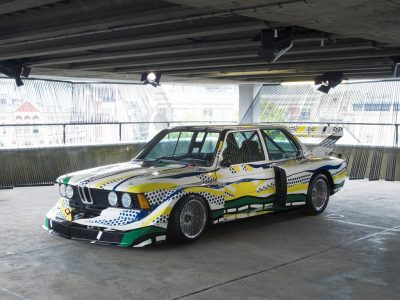Can Cars Be Considered Works of Art?
The debate over what is considered art has covered everything from video games to buildings to software — pretty much anything that has a design. That discussion can easily extend to automobiles. Could cars be considered works of art? Could a machine originally invented to serve a function be used as a canvas to express thoughts or emotions?
Bring Out the Natural Beauty of Your Car: Spring cleaning tips to make your car shine again
Reasons why cars can be considered works of art
As car production has flourished over the past century, art critics outside the automotive industry or fan groups are turning gaze toward vehicle design to determine if cars can be considered works of art. If vehicles are merely machines that functioned as transportation from place to place, why do vehicles within the same segment not look completely identical? Why are aspects like grille shape and headlamp curvature given any thought?
Art is created for a variety of reasons, from evoking an emotional response in viewers to communicating an idea or belief in a certain way (often non-verbal). While it’s true that vehicles are primarily created for transportation and to make money, that doesn’t discount their design value or aesthetic appeal.
Art that originates from commissions or for functional purposes does not disqualify the artifact from being art. In fact, some of the most notable painted, sculpted, and architectural creations from the past two millennia have been the result of a functional commission, not the innate whisperings of the artist’s uncontrollable muse.
In many ways, an automobile is a sculpture in motion. It starts as a drawing that evolves into a clay sculpture and eventually a final form. Throughout the design process, it employs many of the basic elements of design, such as lines, curves, texture, and spatial emphasis. Just like painting, though, automotive designers are restricted to the confines of their canvas, ensuring their creation fits within certain parameters.
Over the years, vehicle styles changes with the times just like other art styles, and looking back on periods of automotive history reflect the artistic values of the time. Much of automotive marketing rests on the belief that some vehicles are visually and aesthetically more appealing. Like artists of other mediums, vehicle designers employ emotions, even following particular design philosophies based on natural inspirations (such as Toyota’s Vibrant Clarity design philosophy).
What about today? Do you think modern vehicles have lost their artistic integrity, or are they still as beautifully nuanced and aesthetically engaging as they used to be?
Turning Your Car into an Art Installation: Trunk or treat display ideas for Halloween vehicle decorations
Aaron is unashamed to be a native Clevelander and the proud driver of a Hyundai Veloster Turbo (which recently replaced his 1995 Saturn SC-2). He gleefully utilizes his background in theater, literature, and communication to dramatically recite his own articles to nearby youth. Mr. Widmar happily resides in Dayton, Ohio with his magnificent wife, Vicki, but is often on the road with her exploring new destinations. Aaron has high aspirations for his writing career but often gets distracted pondering the profound nature of the human condition and forgets what he was writing… See more articles by Aaron.



